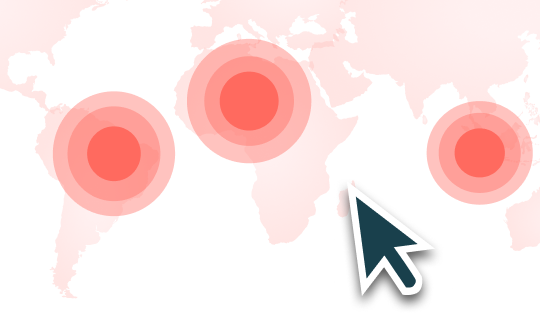Financial institutions are exposed to deforestation risks via their loans and investments in companies that produce, trade or use soft commodities, including soy, beef and palm oil. This encompasses a wide range of companies at all stages of the supply chain, from those managing plantations, to commodity traders, processors and manufacturers, and retailers across a wide sector of industries from food to cosmetics. Agricultural expansion is driving over 70 percent of tropical deforestation globally, as forests are cleared to make way for land to grow crops or raise cattle.
For financial institutions, there are two primary routes of exposure to consider: direct and indirect.
Direct exposure to deforestation-risk companies
Many financial institutions directly finance (either via debt or equity) companies that have a high level of deforestation risk exposure, such as beef, palm oil and soy traders. For example, Trase Finance shows that the asset manager Vanguard Group holds shares in Bunge, a grains commodity trader. Directly and via its subsidiaries, Bunge is exposed to significant deforestation risk through its trade of soy and palm oil. Trase Finance estimates Bunge’s exports of Brazilian soy alone are associated with 11,185 hectares of deforestation risk. As a shareholder, Vanguard is exposed to a share of this risk. Overall, Vanguard is the financial institution with the highest exposure to Brazilian soy deforestation risk from its equity holdings in commodity traders, according to Trase Finance.
Indirect exposure through funds or banks
Indirect exposure through investment chains is more challenging to assess for financial institutions, but can prove a significant source of exposure.
One important avenue for such indirect exposure to deforestation risk is through equity investments in banks that lend to forest risk companies.
Looking at the asset manager Vanguard again, Trase Finance shows that they hold a minority equity stake in Bank Negara Indonesia, which provides loans to the Indonesian palm oil sector and receives a low score for policies and commitments in place to prevent deforestation. Vanguard’s equity holding in Bank Negara Indonesia therefore leaves them with indirect exposure to deforestation risk.
Another avenue for indirect exposure is via investments in active or passive funds with exposure to forest risk companies. Even investments in funds with an Environmental, Social and Governance (ESG) label may carry a deforestation risk. For example, Trase Finance shows that BlackRock’s iShares MSCI USA ESG Optimized ETF has shareholdings in soy traders Bunge and ADM, which both carry deforestation risk.
Data gaps limit monitoring ability
Leading financial institutions that are aware of the importance of addressing deforestation risks still face a significant challenge in assessing, monitoring and managing their deforestation risk exposure. Investment flows and supply chains are often long, complex and opaque. Traceability challenges in soft commodity supply chains include the aggregation of commodities, long supply chains with many indirect suppliers and, in the case of palm oil, coffee and cocoa, many smallholder farmers. For downstream companies, including manufactures and retailers, such commodities may be one ingredient in a processed product, such as palm oil in toothpaste or shampoo, or soy feed embedded in meat and dairy products.
New tools improve transparency
Data gaps remain a challenge, but a number of supply chain transparency initiatives have emerged that assess deforestation risks. Trase Finance now maps a subset of overall deforestation exposure specifically for financial institutions, covering commodity traders exporting Brazilian beef and soy, and Indonesian palm oil. The tool aims to map the financing of more than half of total trade in major forest risk commodities by 2021.
Providing full transparency on the deforestation risk for financial institutions will rely on much greater disclosure from companies on their level of exposure. But while the push for improved deforestation disclosure continues, financial institutions can make use of existing tools and take the first steps towards tackling their deforestation risks.
Was this article useful?





